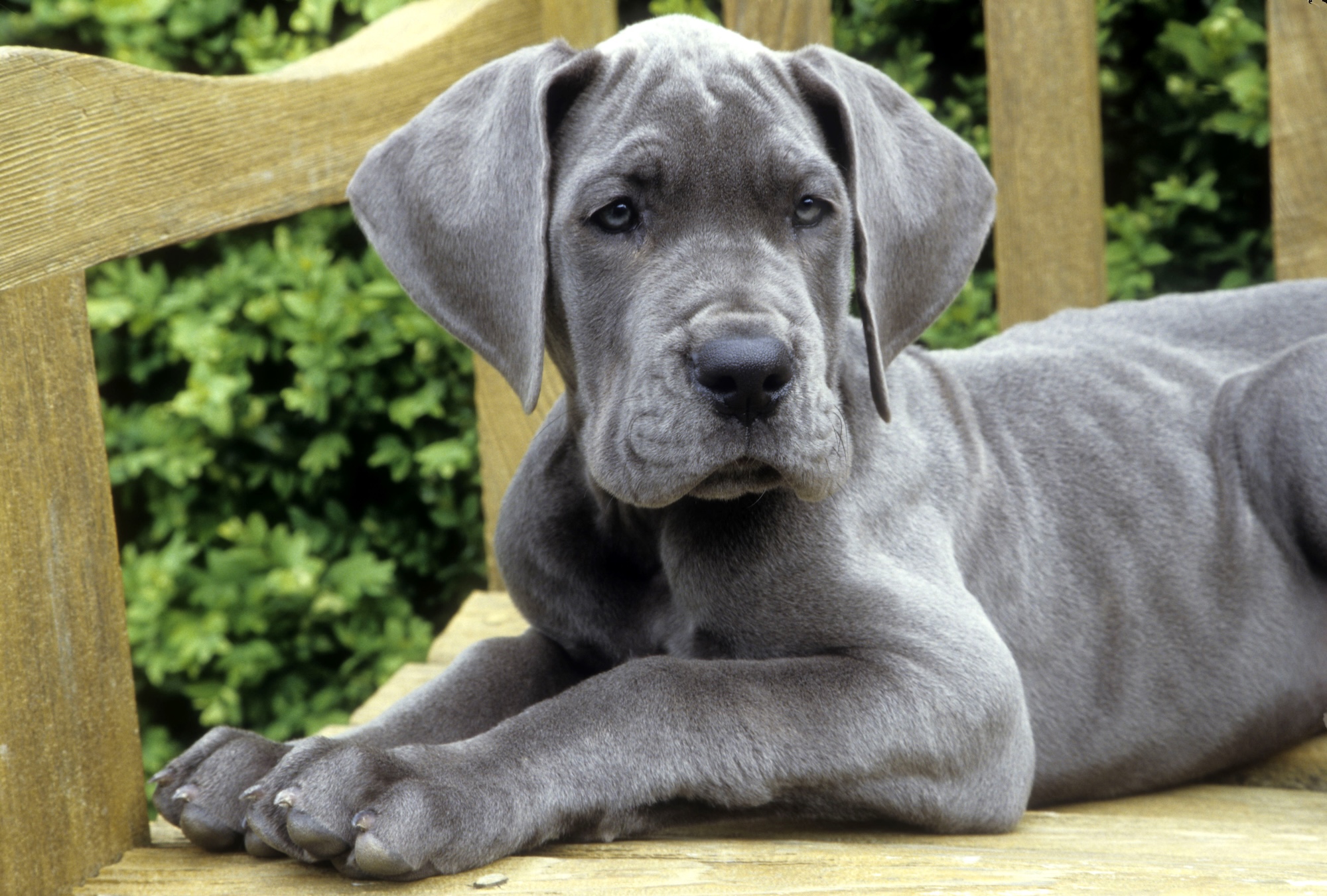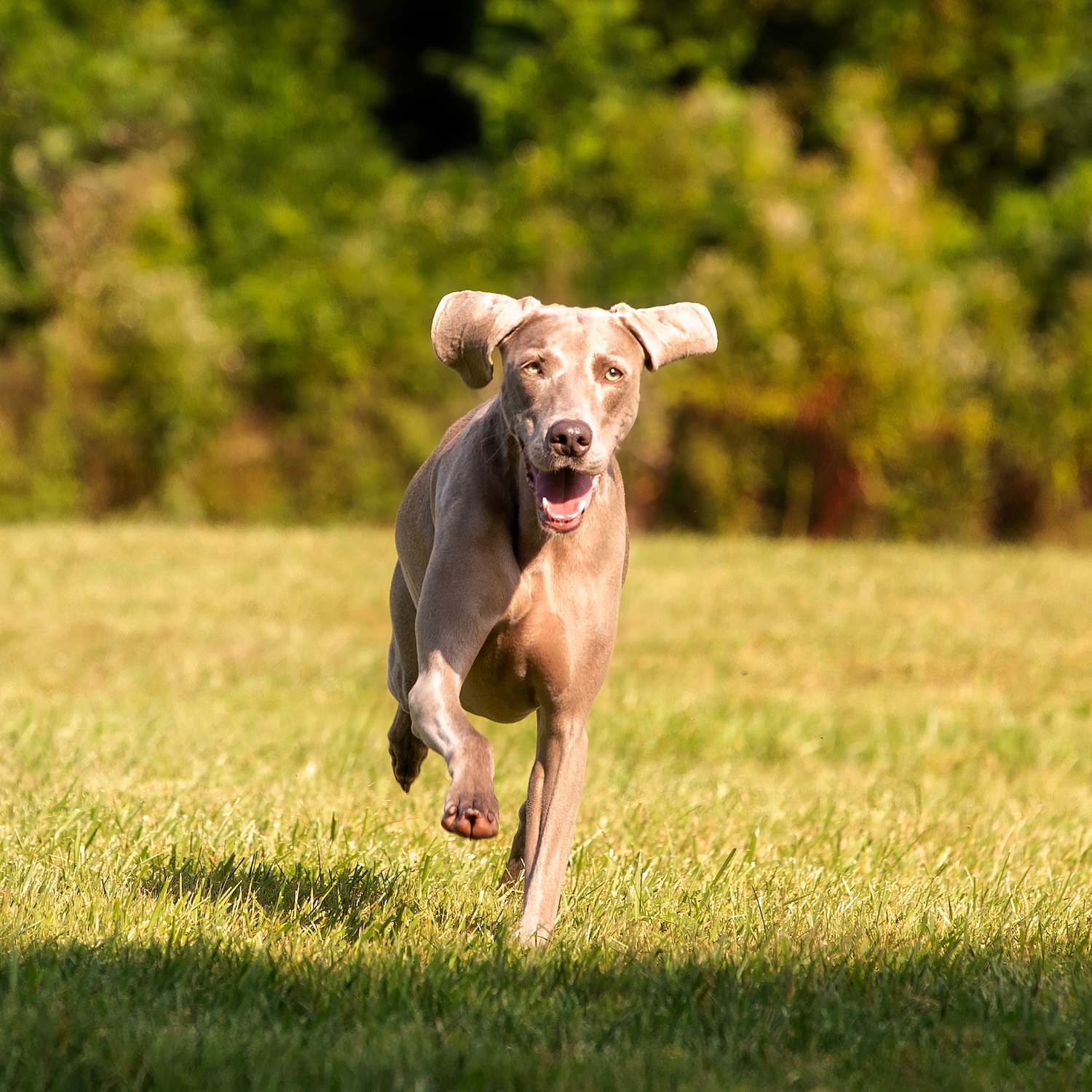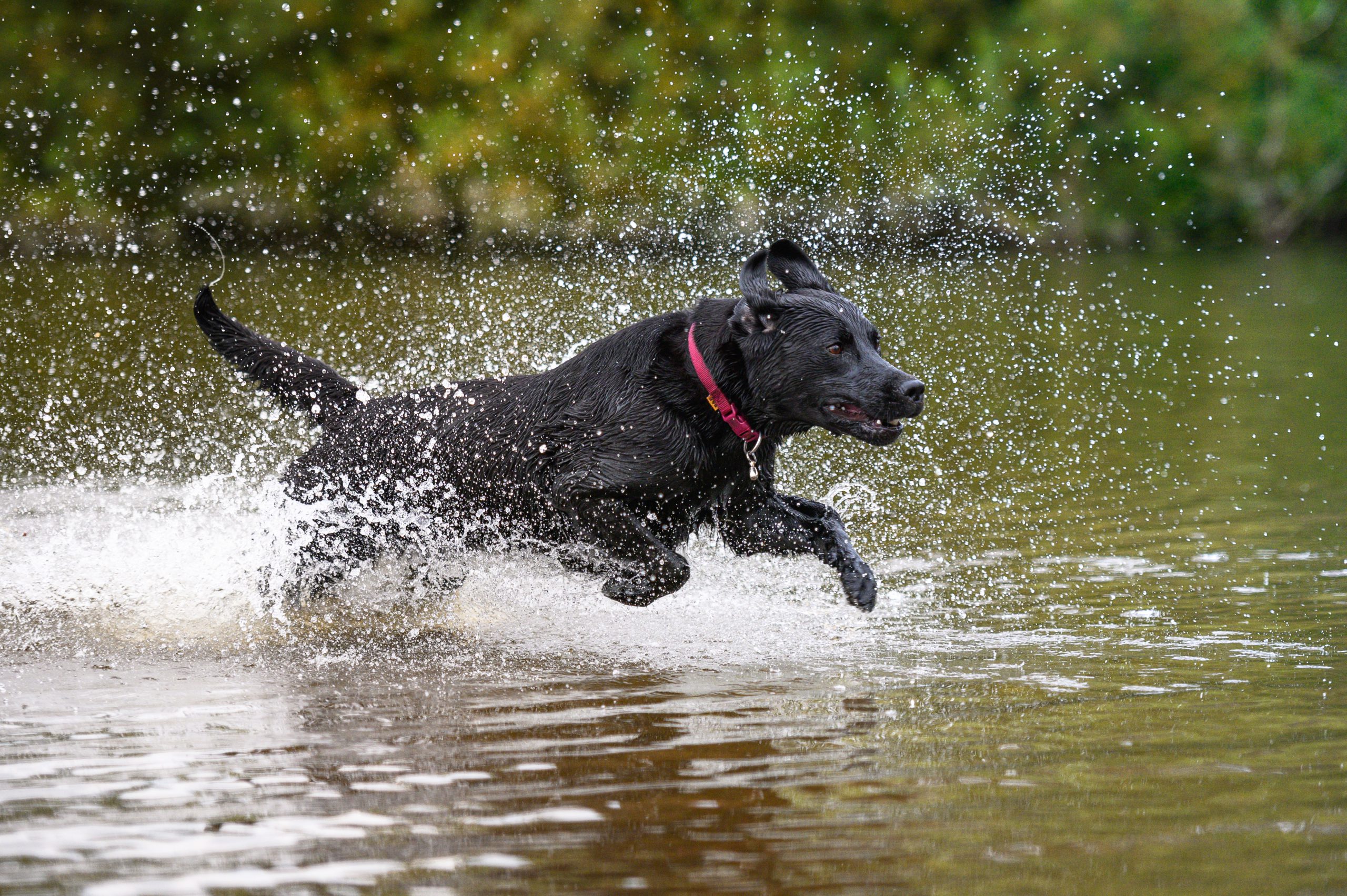With its imposing stature and rough, shaggy coat, the Irish wolfhound cuts a formidable figure. The ancient breed towers above other dogs—a testament to its origins in big game hunting—but retains a calm and gentle demeanor.
Given their sheer size and ample exercise needs, Irish wolfhounds are not right for everyone—inexperienced dog owners, or those who don’t have a lot of time to dedicate to training and exercise, may want to steer clear. But these giants are known to be very affectionate with their favorite people—and, with proper socialization and training, they can make excellent family companions.
Before you decide if there’s an Irish wolfhound in your future, take the time to learn about the breed’s history, temperament, and care requirements. Here’s everything you need to know about these dogs and what they’re like to live with.
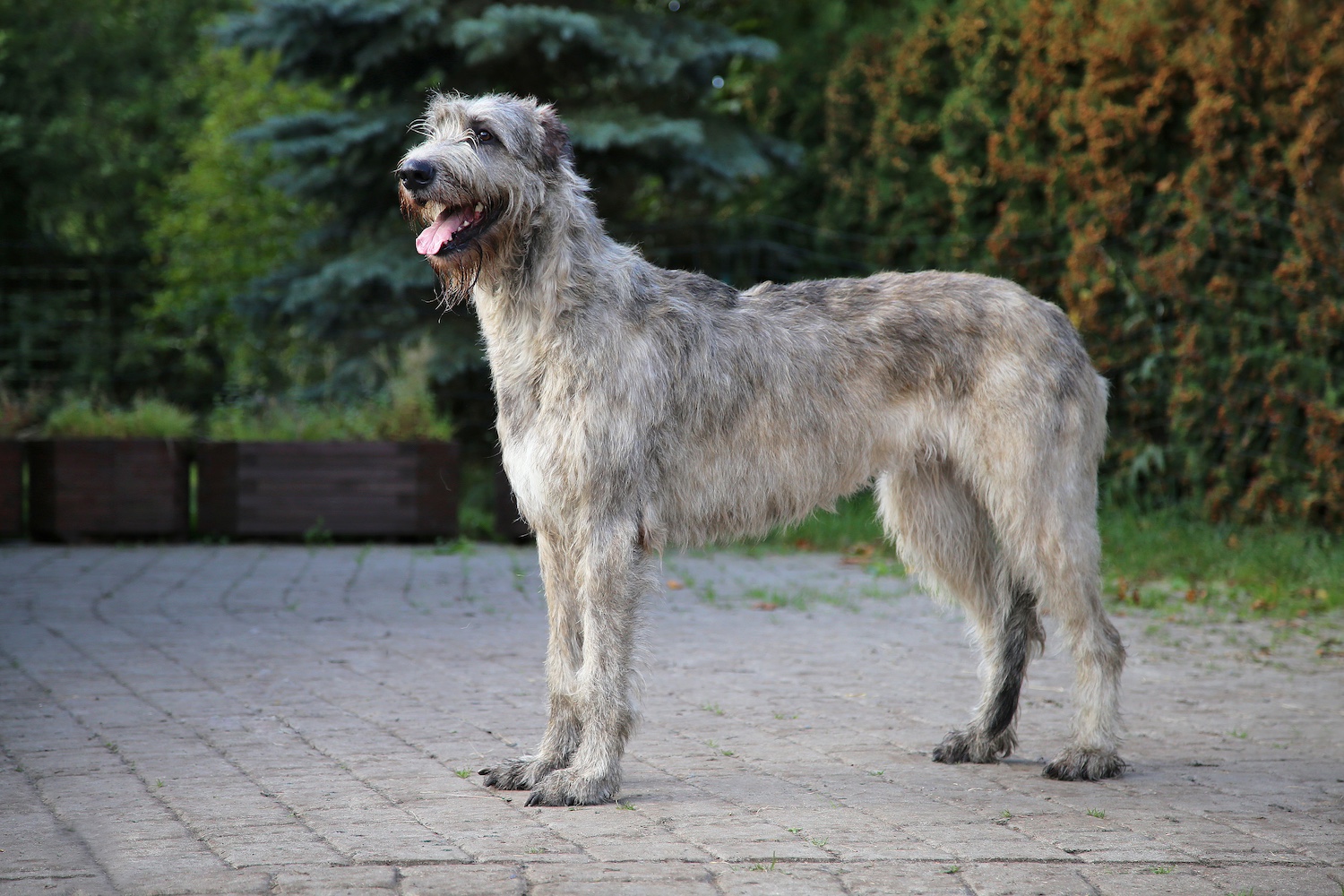
Basic Irish wolfhound breed facts
The tallest dog breed, and one of the largest overall, the Irish wolfhound is unofficially considered by many to be the national dog of Ireland. The breed’s image has been used by Irish government authorities on everything from World War I recruitment posters to revenue stamps. The nation’s national rugby team is even known as the Wolfhounds.
Irish wolfhounds average 30 to 32 inches in height, and weigh up to 180 pounds. Despite their significant size, Irish wolfhounds are agile and capable of great speed.
Irish wolfhounds are often described as gentle giants. The intimidating sight of a full-grown Irish wolfhound may be enough to deter the average intruder, but they generally don’t make ideal guard dogs; for one thing, they don’t tend to be prolific barkers.
Second to their size, Irish wolfhounds’ most distinctive physical feature is their shaggy coat, which can be gray, black, white, brindle, red, or fawn (grayish brown). Irish wolfhounds have double coats that consist of a harsh, wiry outer coat and a soft undercoat. In contrast to many double-coated breeds, these hounds don’t go through seasonal periods of increased shedding. They are moderate year-round shedders that benefit from weekly brushing.
Irish wolfhound breed history
Though the exact details of the breed’s origin are unclear, it’s undebatable that the Irish wolfhound is an ancient breed. References to large Irish hounds date all the way back to 391 AD, when Roman statesman Quintus Aurelius Symmachus recounted receiving several as a gift.
Over the centuries, this Irish hound earned its reputation as a fearsome warrior and a talented big-game hunter. Large enough to bring down elk and quick enough to pursue smaller game, these hounds were also known—as their name suggests—for hunting wolves.
As Irish wolfhounds gained popularity overseas, their numbers in Ireland diminished. The breed had become a status symbol—a popular gift between rulers and nobles. After the elk and wolves in Ireland were hunted to extinction, the Irish wolfhound nearly disappeared as well. George Augustus Graham, a captain in the British Army, is credited with reviving the breed. In the mid-1800s, Captain Graham acquired several of the few remaining wolfhounds in Ireland, and established a breeding program—introducing Scottish deerhound and Great Dane bloodlines that he believed were derived from early Irish wolfhounds.
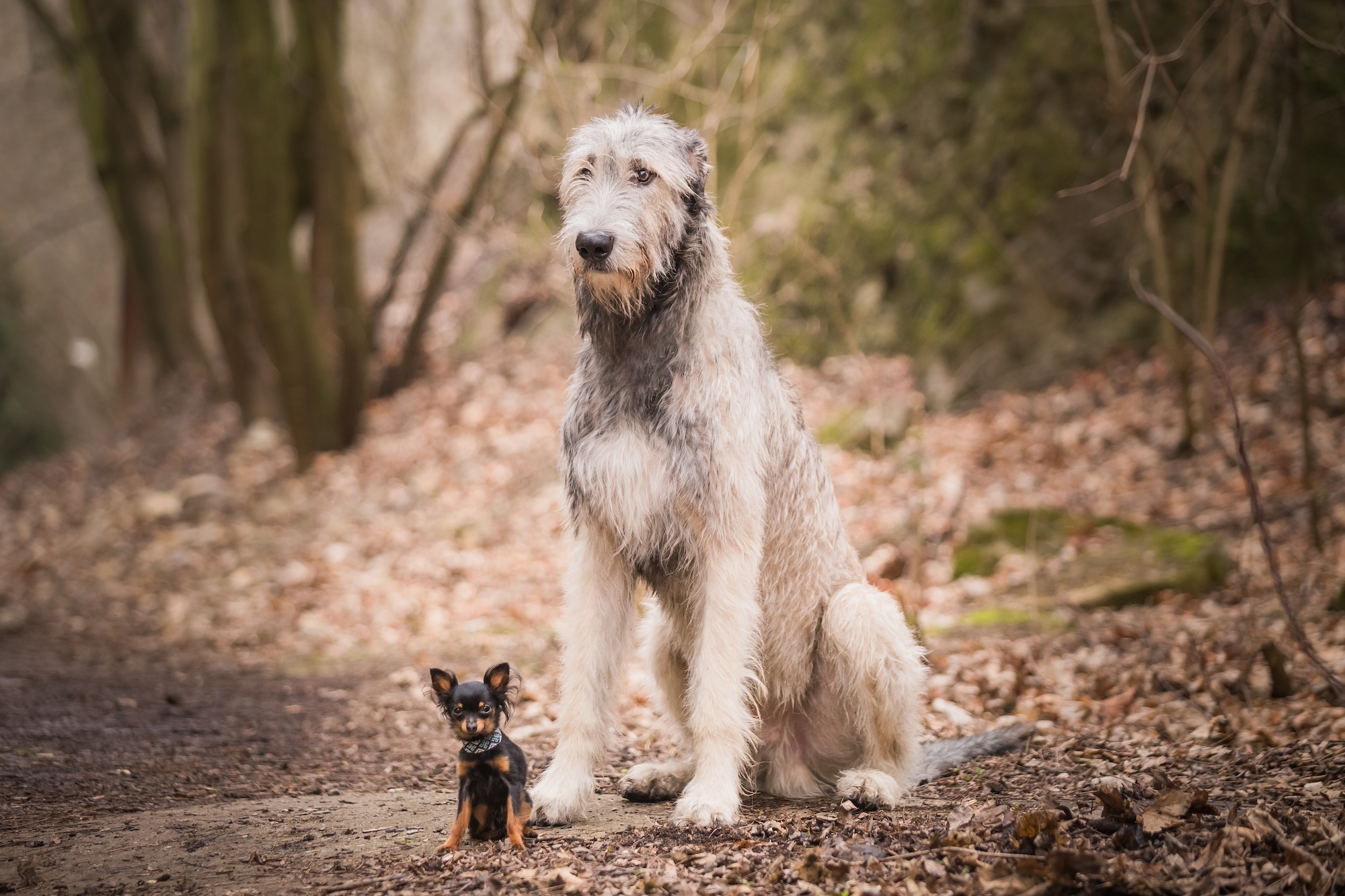
Irish wolfhound personality
Having outlived their purpose as hunters, today’s Irish wolfhounds are more commonly family companions. But although they’re known for being affectionate with human and animal family members, their massive size necessitates a certain degree of caution around children. Even a friendly dog the size of an Irish wolfhound puppy—who may be up to 100 pounds—could hurt a child unintentionally, so always supervise their interactions with kids.
A fully grown Irish wolfhound can weigh as much as an adult man, and may stand even taller on their hind legs. These dogs mature slowly, so it may take several years for an Irish wolfhound to attain full size and outgrow youthful energy and temperament. Irish wolfhound owners often describe their dogs as giant puppies who don’t act their age.
Irish wolfhounds are generally easygoing. As with any breed, however, they require daily exercise and plenty of mental stimulation to prevent boredom and stress. These hounds don’t tend to bark much, but if their exercise needs go unmet they may make their frustration known.
Remember, every dog is an individual—if your Irish wolfhound doesn’t act the way you’d expect based on others’ experiences, that doesn’t make them less of an Irish wolfhound or mean they’re somehow defective. Like people, they have their own personalities. Spend time getting to know your dog so you can appropriately meet their needs as they grow and mature.
Irish wolfhound grooming
Given the wiry texture of the Irish wolfhound’s coat, its appearance has a slightly unkempt appeal. You should brush your Irish wolfhound’s coat weekly to remove loose hair and dirt, but you probably won’t need to bathe them more than once every month or two unless they get visibly dirty.
Trim your Irish wolfhound’s nails regularly; check their ears weekly and clean them as needed. Daily toothbrushing, complemented by annual dental exams and occasional professional cleanings, will help keep your Irish wolfhound’s teeth healthy.
Irish wolfhound socialization and training
Irish wolfhounds are highly intelligent, and are very attentive to their human companions. If you prioritize forming a trusting bond with your wolfhound early on, you’ll find this breed eager to please and responsive to training.
While puppies are slow to mature, Irish wolfhounds are fast learners—it’s your job to keep up. When it comes to training, it’s important to establish a strong foundation early on. Irish wolfhound puppies tend to do well in puppy training classes, though at-home socialization is not to be neglected. Remember to reward the behaviors you want, and make training fun for your Irish wolfhound. Let them feel good about how the sessions have gone, and expect positive things to happen when they come to you.
A crate can help with potty training, overnights, and warding off separation anxiety, but be aware: Irish wolfhounds are extra-large dogs, and a crate should always be big enough to allow a dog to stand up, lay down, sit, and stand. Never put your Irish wolfhound in a crate that doesn’t give them the room to do this. On top of that, while crates can be useful training tools, there are numerous behavioral and physical reasons not to leave your dog in there too long. Ask your veterinarian for specifics about what’s right for your dog—but, as a general rule, puppies usually can’t handle more than an hour in a crate for each month of their age (so: three months = three hours), and adult dogs should not spend more than six hours in there.
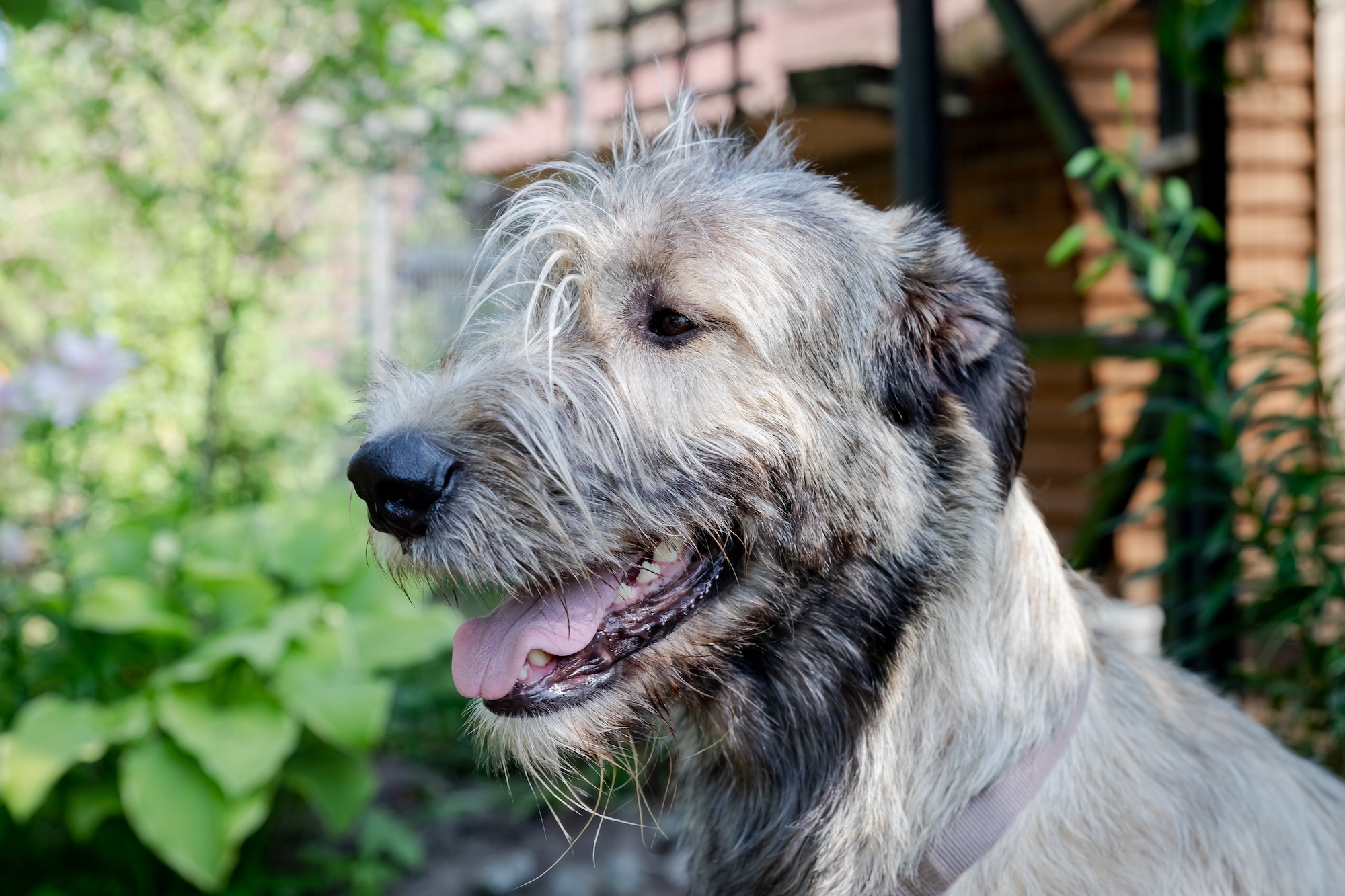
Exercise and mental stimulation for Irish wolfhounds
The Irish wolfhound’s daily exercise needs are fairly high. Talk to your vet about easing a young Irish wolfhound into exercise—too much activity too early can have especially detrimental consequences for giant dogs like these. But, once their bodies are fully developed, many Irish wolfhounds excel as jogging or hiking partners. Others may be content with daily walks and access to a fenced yard.
Keep in mind that physical exercise is only part of the equation—mental stimulation is equally important for Irish wolfhounds.
Lindsay Parenti, a Certified Professional Dog Trainer (CPDT) and the owner of Dr. Woof Animal Behavior Consulting, recommends that Irish wolfhound owners “work within the dog’s abilities, strengths, and preferences.” Irish wolfhounds were bred to hunt by sight and chase, so exercise their brains as well as their bodies.
Irish wolfhounds are a great fit for active dog sports like agility and tracking. They also tend to perform well in lure coursing, an endurance sport that requires dogs to react to the unpredictable movement of a prey-like lure.
Common Irish wolfhound health concerns
Giant breeds like the Irish wolfhound tend to have shorter average lifespans than smaller dogs. Even when properly cared for, a healthy Irish wolfhound has a life expectancy of six to eight years. They’re at particular risk of the following ailments:
Gastric dilatation-volvulus (GDV): One of the most common gastrointestinal problems in Irish wolfhounds (and other large breeds) is gastric dilatation-volvulus. This potentially life-threatening condition occurs when the stomach fills with air—bloat, which is the “dilatation” part of the name—and twists, cutting off blood flow and causing a great deal of pain. Dogs with GDV often have a distended belly and belch or retch unproductively (like they’re trying to vomit, but can’t). They may also drool, have a hard belly, be in pain when their belly is touched, or show signs of distress like panting. If you notice any signs of this illness, get your dog to a vet immediately—it’s a medical emergency.
To help prevent bloat, feed your Irish wolfhound at least two meals per day—dogs who are predisposed to GDV should not eat just one large meal.
Portosystemic shunt: During pregnancy, a mother dog’s liver handles the task of detoxification—so the puppies’ blood vessels shunt, or bypass the liver. If the vessels fail to naturally close after birth, toxins might not be filtered adequately from the blood. Puppies with this congenital defect may not show signs—like walking in circles, disorientation, or seizures—until they are eight weeks or older. Dogs with a portosystemic shunt can also have stunted growth, kidney or bladder infections, and other physical problems.
Heart disease: According to a study conducted by the Irish Wolfhound Foundation, an estimated 30% of Irish wolfhounds develop some form of heart disease by the age of six. Veterinarians recommend screening for heart disease starting at age two.
Joint dysplasia: Large and giant breeds like the Irish wolfhound have a higher risk for joint problems like dysplasia. Typically seen in the hip and elbow joints, dysplasia occurs when the joint repeatedly dislocates, eventually causing it to degrade. This can be painful and lead to early arthritis.
Eye problems: Irish wolfhounds have an increased risk of several inherited eye diseases, including progressive retinal atrophy (PRA) and retinal dysplasia. The breed is also prone to acquired eye diseases like cataracts and corneal dystrophy.
Cancer: While cancer is a common cause of death in all breeds, Irish wolfhounds are particularly prone to osteosarcoma, a type of bone cancer. The Irish Wolfhound Foundation estimates that as many as 20% of Irish wolfhound deaths are caused by this form of cancer.
Breeding plays a key role in determining your Irish wolfhound’s risk for certain issues, but a healthy diet and regular exercise can play a protective role when it comes to your dog’s long-term health. Regular veterinary checkups are also essential.
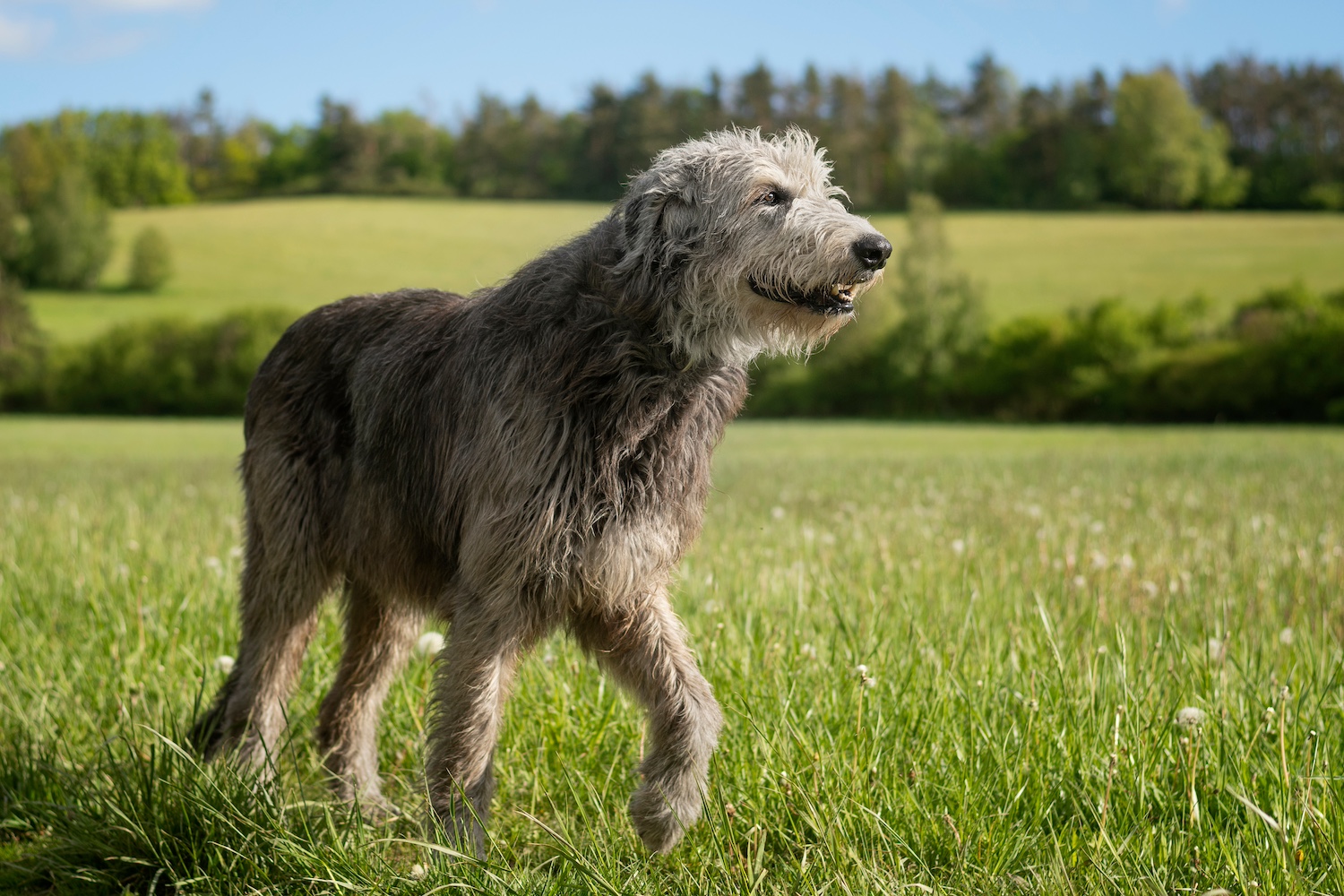
Feeding your Irish wolfhound
A complete and balanced diet is essential for supporting healthy growth in Irish wolfhound puppies and maintaining long-term wellness in adulthood. Here are some important considerations for feeding your Irish wolfhound:
Avoid rapid growth in puppies: Irish wolfhound puppies may not reach their full size until 18 months of age. As they grow, it’s important to provide balanced nutrition to support healthy development—and avoid overfeeding that might cause them to grow too quickly. Rapid growth puts large and giant breed puppies at risk for musculoskeletal problems in adulthood.
Watch their weight: One of the best things you can do to look out for the long-term health of your Irish wolfhound (or any dog) is to keep them at a healthy weight and lean body condition—dogs in a lean body condition can live up to 2.5 years longer than those who are overweight. Extra weight puts additional stress on the joints, metabolism, and heart, so it’s important to control meal portions and calorie intake while ensuring proper nutrition. A fresh-food plan makes it easy to feed the right amount of food for your dog’s age, size, and activity level, making weight management more straightforward.
Support joint health: A fresh diet that provides balanced omega-3 fatty acids may help keep joints healthy. A pre-portioned fresh food plan also makes it easy to feed the right number of calories every day. This helps maintain a healthy weight, which is another key factor in keeping joints healthy, as well as improving general health and quality of life.
Where to get an Irish wolfhound
If an Irish wolfhound sounds like the right breed for you, consider adopting from a local shelter or rescue. The Irish Wolfhound Club of America’s national rescue directory could be a good place to start.
